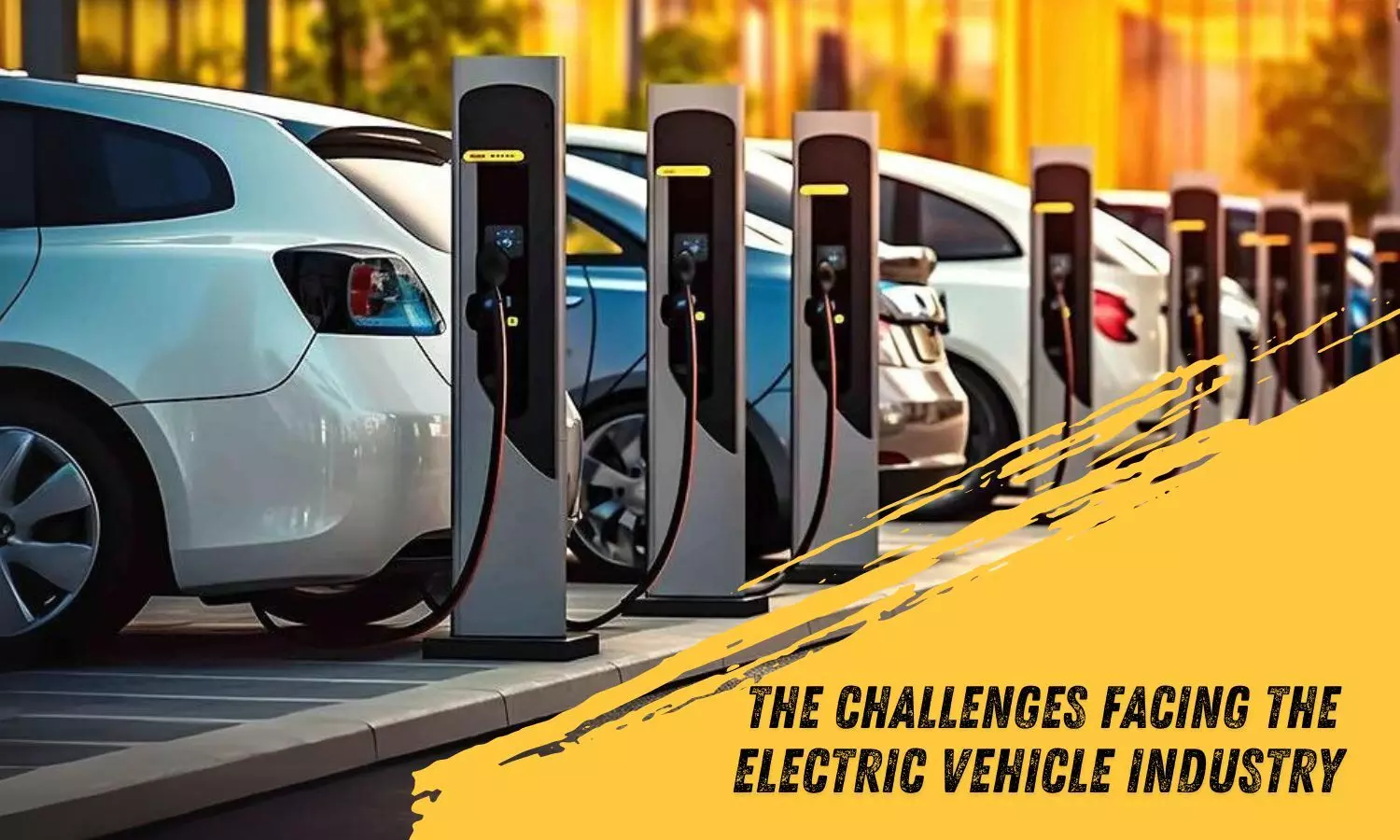Roadblocks in India's Electric Vehicle Production: What’s Slowing Progress?
Owing to technological advancements and shifting consumer preferences, electric vehicles have undoubtedly gained significant popularity. However, despite the government's attempts to encourage EV use, challenges such as infrastructure development and cost remain substantial impediments. So, let's address the challenges and solutions to ensuring both industry growth and national economic growth.
Roadblocks in India's Electric Vehicle Production: What’s Slowing Progress?

Ever since smart devices were introduced, it has become much easier to embrace complex and expensive technology. This introduction has not only made our personal lives easier, but it has also made professional lives in a variety of other fields less complicated than ever before. Among various industries, the automobile industry is no exception. The fundamental shifts have transformed the automobile industry into a hotbed of innovation, with electric vehicles leading the charge.
According to IBEF, India is poised to become the largest EV market by 2030, with a massive investment opportunity of over $200 billion in the next 8–10 years. This growth is being driven by evolving consumer preferences, government incentives and advances in automotive production, among others, for an eco-friendly future of the auto industry.
In this context, as the world shifts towards a more sustainable future, the electric vehicle (EV) sector will gain more momentum, presenting new opportunities for job creation and economic growth in the sector. But, despite the government's efforts to promote EV adoption, challenges, such as infrastructure development and costs, continue to pose significant obstacles.
Here let's delve into a few obstacles hindering the growth and future of vehicle production:
i) Limited Consumer Awareness
One of the significant obstacles hindering the growth of the EV sector is the consumer itself. A few early adopters and forward-thinking are eager to get behind the wheel of an EV, but others aren’t so sure. Many potential buyers are still unaware of the benefits of electric vehicles, such as lower operating costs and reduced environmental impact. This lack of awareness can slow down adoption rates and hinder market growth in the long run.
ii) Charging Infrastructure Limitations
Infrastructural issues inhibit India's goal of full EV adoption. In fact, because of differences in engines and other operational components, EVs necessitate a separate charging and maintenance infrastructure than traditional ICE vehicles. However, India's current charging infrastructure is insufficient to fulfill the increasing demand for EVs. The Ministry of Power reports that there are only 12,146 public EV charging points in India as of February 2, 2024, limiting the use of electric vehicles.
iii) High Production Costs
There is no denying the fact that electric vehicles and car production do not come cheap. By and large, EVs cost significantly more to produce than traditional gas-engine cars. For example, the average cost to produce a midsize electric vehicle is around $12,000, which is more than a comparable gas-powered vehicle. These high production costs can deter manufacturers from investing in EV production, limiting the variety and availability of electric vehicles for consumers.
iv) Difficulty Finding a Technician
Most auto owners discover that having their vehicle serviced by a dealer is much more expensive than using a reputable independent maintenance and repair company. With the EV sector being very tiny, there are only a few skilled EV repair technicians and even fewer certified individual shops. But, fortunately, EVs require less maintenance than gas-powered vehicles. For example, if an expensive component such as the battery pack, which can cost Rs. 15,000 per kWh or more depending on the EV model, needs to be replaced, there is little competition to help keep costs down.
Despite advancements in the electric vehicle (EV) sector, there are still challenges related to production capacity and technology. To address this, AI in automotive manufacturing emerged as an advanced technology, streamlining production processes and elevating product quality. In fact, overcoming these hurdles will be vital for the industry's expansion, achieving the government's target of 30% EV adoption by 2030, as per NITI Aayog.
Car Manufacturing Technology Trends
Paving the way for a cleaner and more sustainable future for transportation, the good news is that innovations in car manufacturing are certainly helping to address challenges. For example, advancements in battery technology are extending the range of EVs and reducing charging times, making them more convenient for consumers. Additionally, improvements in manufacturing processes are driving down costs, making EVs more accessible to a wider range of consumers.
Furthermore, the impact of automation on car manufacturing is certainly promising. These technologies can enhance production efficiency, improve product quality, and reduce costs. Thus, in the EV sector, automation is helping streamline battery production, while AI is optimizing charging systems and improving vehicle performance.
Future of Vehicle Production in India: Promising
Despite the obstacles faced by the EV sector in India, the future of vehicle production looks promising. In fact, with the government's support, advances in automotive production technology and innovations in car manufacturing, the industry is poised for significant growth. According to IBEF, the Indian EV market is expected to expand to $113.99 billion by 2029, with a CAGR of 66.52%.
In a nutshell, by adopting future trends in car manufacturing, advances in automotive production and innovations in car manufacturing, the industry can achieve sustainable growth and a bright future.

